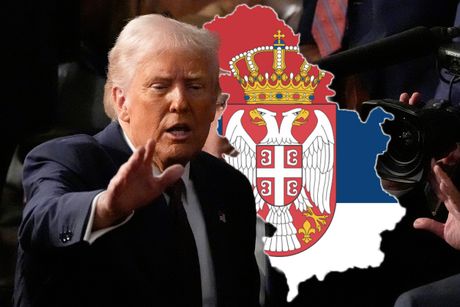What exactly is Trump demanding from Serbia, and can we do it: US tariff strike will have big consequences

Starting on August 1, the United States will introduce a reciprocal tariff of 35% on Serbian exports, which is a direct blow to the key sectors of the country's economy. Although this figure is slightly lower than the previously announced 37%, from the exporters' perspective - it is still worryingly high.
The question that arises now is: what does the US actually want from Serbia and how will this trade pressure affect the domestic economy?
Who loses the most?
Above all, companies that export steel, aluminum, cables, tires, electronic components, and even IT services. The US is one of the most important high-earning markets for these industries, and the additional 35% tariff effectively renders these companies uncompetitive.
This means that companies must either:
- lower prices (which directly reduces profits),
- redirect goods to less attractive markets,
- or even terminate multi-year contracts with US partners.
For the Serbian economy, which is trying to diversify its exports and become competitive outside the EU, this is a serious step back.
What is the US really demanding?
Although this is formally referred to as "balancing trade flows" the essential requirements go much deeper:
Foreign policy - Reducing reliance on Russia and China
EU integration - A more active role in regional initiatives under the auspices of the West
Trade standards - Harmonization of export documentation and quality control
In other words, economic tariffs are used as a means of political pressure, which is not unusual in international diplomacy - but it is a signal that the space for Serbia's neutral position is narrowing.
Can something be done?
Negotiations are ongoing. The Ministries of Trade and Foreign Affairs are trying to:
- reduce the customs rate
- secure exceptions for certain branches (e.g. IT and the pharmaceutical sector)
- offer diplomatic concessions in exchange for economic flexibility
In the best case scenario, Serbia could get a transitional period for adjustment or preferential agreements for strategic products. However, time is running out - and the final decision must be made before August 1.
How much does this cost Serbia?
According to the latest available data, Serbia exports goods worth about 500 million dollars a year to the US. Assuming an average export-oriented profit of 10-15%, a 35% tariff could swallow up more than $150 million annually - a direct hit to wages, investment and stability of companies.
Economy tested by politics
US tariffs are not just a trade mechanism - but a clear political signal. Serbia must decide: whether it will agree to certain political concessions in exchange for economic stability, or whether it will try to build alternative alliances and markets.
In both cases - the time for calculations has passed, and the decisions that will be made in the next few weeks will have a long-term impact on the economy and the international position of Serbia.
(Telegraf Biznis)
Video: Firme zatvaraju pogone tokom leta zbog rada na imanju, jedno od rešenja E-bolovanje
Telegraf.rs zadržava sva prava nad sadržajem. Za preuzimanje sadržaja pogledajte uputstva na stranici Uslovi korišćenja.

